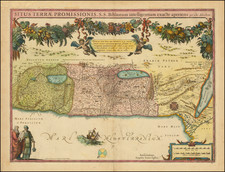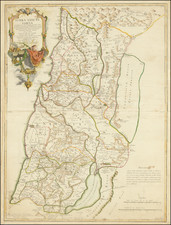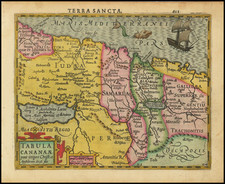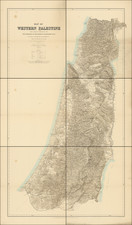Stock# 95604
Description
Decorative example of Von Adrichom's map of the southern Holy Land Region, centered on the Desert of Pharan or Paran.
The map is oriented with East at the top east and covers the Paran from the Desert of Moab to the Mediterranean and from the Dead Sea to Egypt's Nile Delta. This map shows the course of the Israelites as they fled out of Egypt, across the Red Sea, and subsequently spent the next forty years wandering in the Sinai before finally arriving in the Promised Land by crossing the Jordan River just north of the Dead Sea.
Beginning with the town of Ramesse, the Exodus and wandering of the Hebrews is shown on a year by year basis. The crossing of the Red Sea is shown, as is the ascent of Mount Sinai and the Golden Calf.
Reference
Laor 7.














